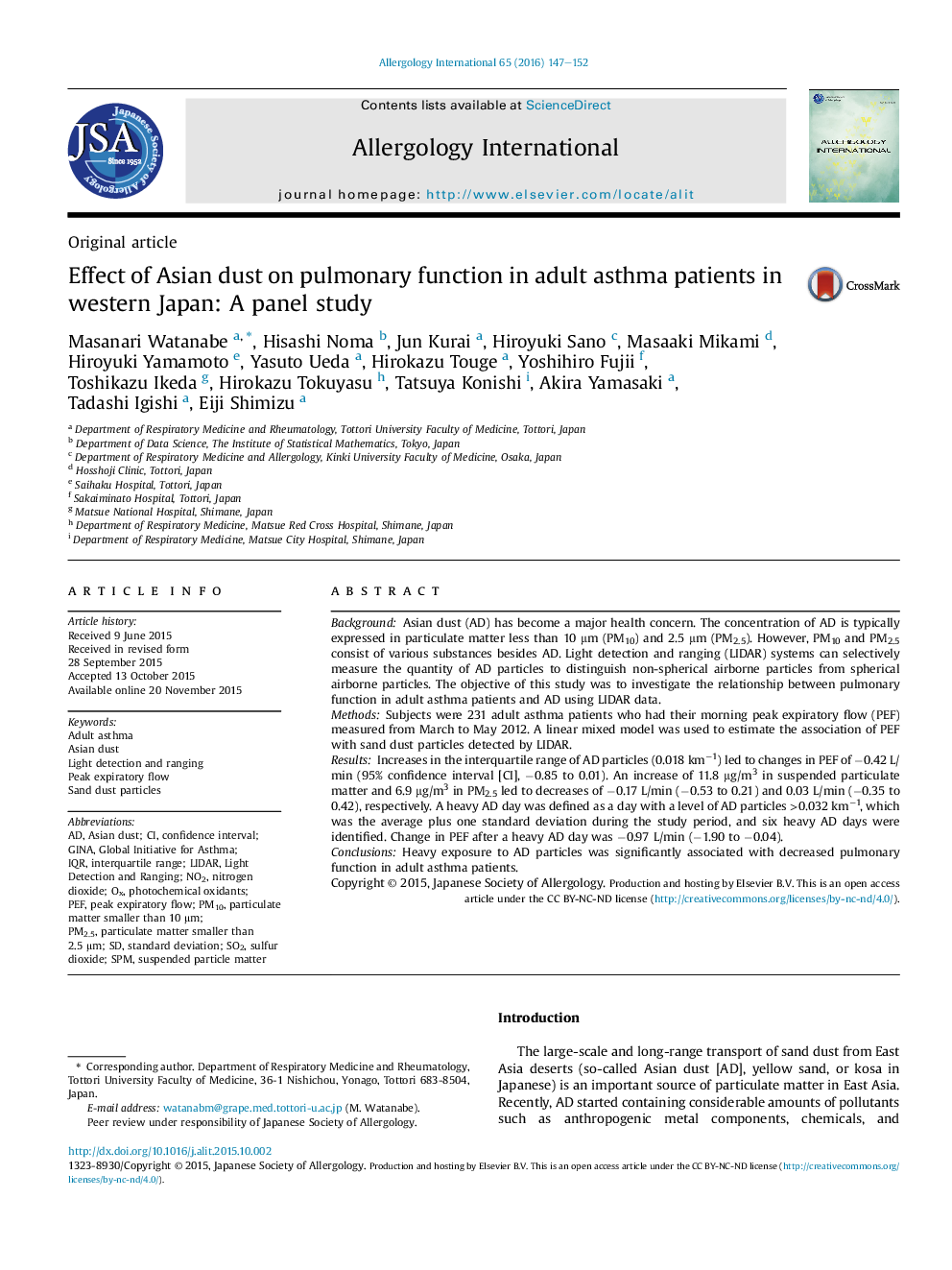| Article ID | Journal | Published Year | Pages | File Type |
|---|---|---|---|---|
| 3340475 | Allergology International | 2016 | 6 Pages |
BackgroundAsian dust (AD) has become a major health concern. The concentration of AD is typically expressed in particulate matter less than 10 μm (PM10) and 2.5 μm (PM2.5). However, PM10 and PM2.5 consist of various substances besides AD. Light detection and ranging (LIDAR) systems can selectively measure the quantity of AD particles to distinguish non-spherical airborne particles from spherical airborne particles. The objective of this study was to investigate the relationship between pulmonary function in adult asthma patients and AD using LIDAR data.MethodsSubjects were 231 adult asthma patients who had their morning peak expiratory flow (PEF) measured from March to May 2012. A linear mixed model was used to estimate the association of PEF with sand dust particles detected by LIDAR.ResultsIncreases in the interquartile range of AD particles (0.018 km−1) led to changes in PEF of −0.42 L/min (95% confidence interval [CI], −0.85 to 0.01). An increase of 11.8 μg/m3 in suspended particulate matter and 6.9 μg/m3 in PM2.5 led to decreases of −0.17 L/min (−0.53 to 0.21) and 0.03 L/min (−0.35 to 0.42), respectively. A heavy AD day was defined as a day with a level of AD particles >0.032 km−1, which was the average plus one standard deviation during the study period, and six heavy AD days were identified. Change in PEF after a heavy AD day was −0.97 L/min (−1.90 to −0.04).ConclusionsHeavy exposure to AD particles was significantly associated with decreased pulmonary function in adult asthma patients.
